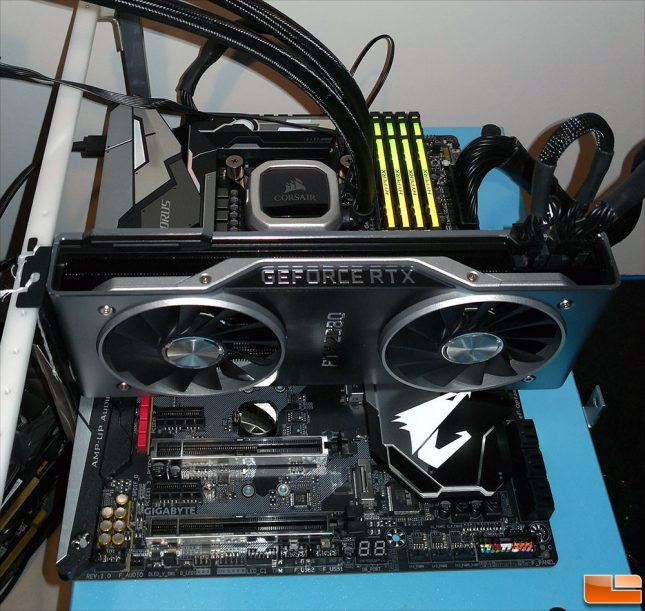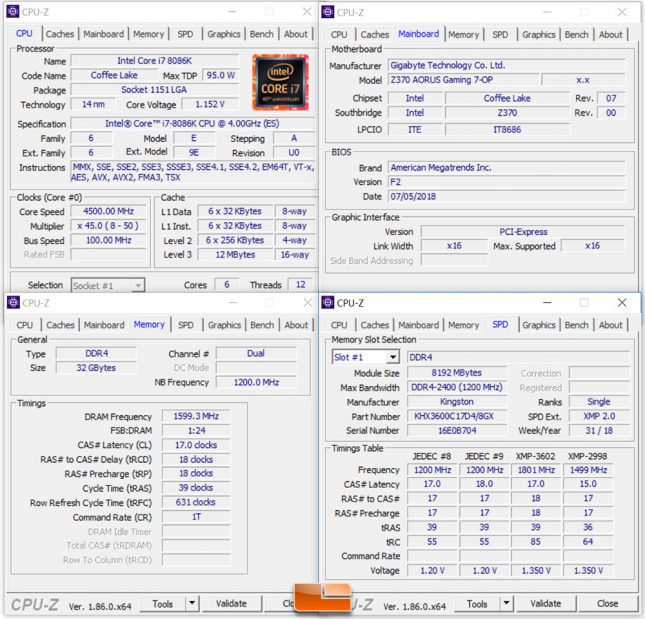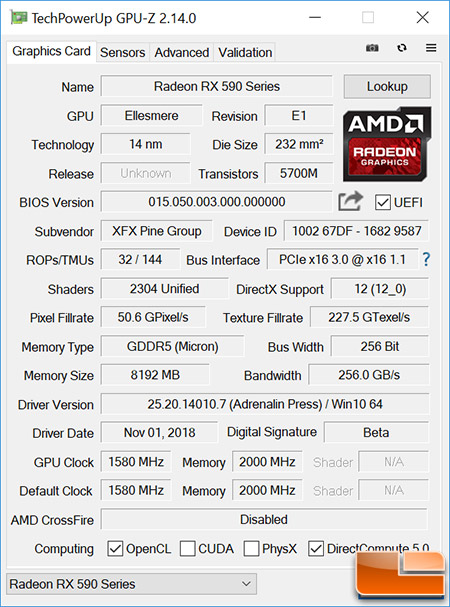XFX Radeon RX 590 Fatboy Video Card Review
Test System
Before we look at the numbers, let’s take a brief look at the test system that was used as we switched over to a new system for this review. All testing was done using a fresh install of Windows 10 Pro 64-bit version 1803 and benchmarks were completed on the desktop with no other software programs running. There has been some concern of people testing a cold card versus a hot card, but we’ve always done out testing ‘hot’ since the site started back more than 15 years ago.
Video Cards & Drivers used for testing:
- AMD Radeon Software Crimson Edition 18.9.1 For Radeon Cards
- NVIDIA GeForce 399.24 WHQL for GeForce GTX Cards & 411.51 WHQL for GeForce RTX
Intel Z370 Test Platform
The Intel X99 platform that we used to test the all of the video cards was running the Gigabyte AORUS Z370 Gaming 7 motherboard with BIOS F2 that came out in July 2018. We went with the Intel Core i7-8086K processor and left it at stock speeds. The HyperX Predator RGB DDR4 memory kit we used was a 32GB kit (4x8GB) and while it is rated at 3600MHz, but we actually ran it at 3200MHz at CL17 1T memory timings. We did this to use a more common memory speed. The Samsung SSD 970 EVO 1TB M.2 PCIe NVMe SSD was run with latest firmware available. A Corsair RM1000x power supply provides clean power to the system and is also silent as the fan hardly ever spins up.
Here are the exact hardware components that we are using on our test system:
| The Intel Z370 Test Platform | |||||
|---|---|---|---|---|---|
|
Component |
Brand/Model |
Live Pricing |
|||
| Processor | Intel Core i7-8086K | ||||
| Motherboard |
Gigabyte Z370 Gaming 7
|
||||
| Memory |
32GB HyperX RGB 3600MHz DDR4
|
||||
| Video Card | Various | ||||
| Solid-State Drive | Samsung SSD 970 EVO 1TB | ||||
| Cooling | Corsair Hydro H115i | ||||
| Power Supply | Corsair RM1000x | ||||
| Case | HighSpeed PC Top Deck Tech Station | ||||
| Operating System | Windows 10 64-bit | ||||
| Monitor | Acer Predator X27 4K HDR | ||||
XFX Radeon RX 590 Fatboy GPU-Z
Let’s move on to the Battlefield 1 benchmark results!



